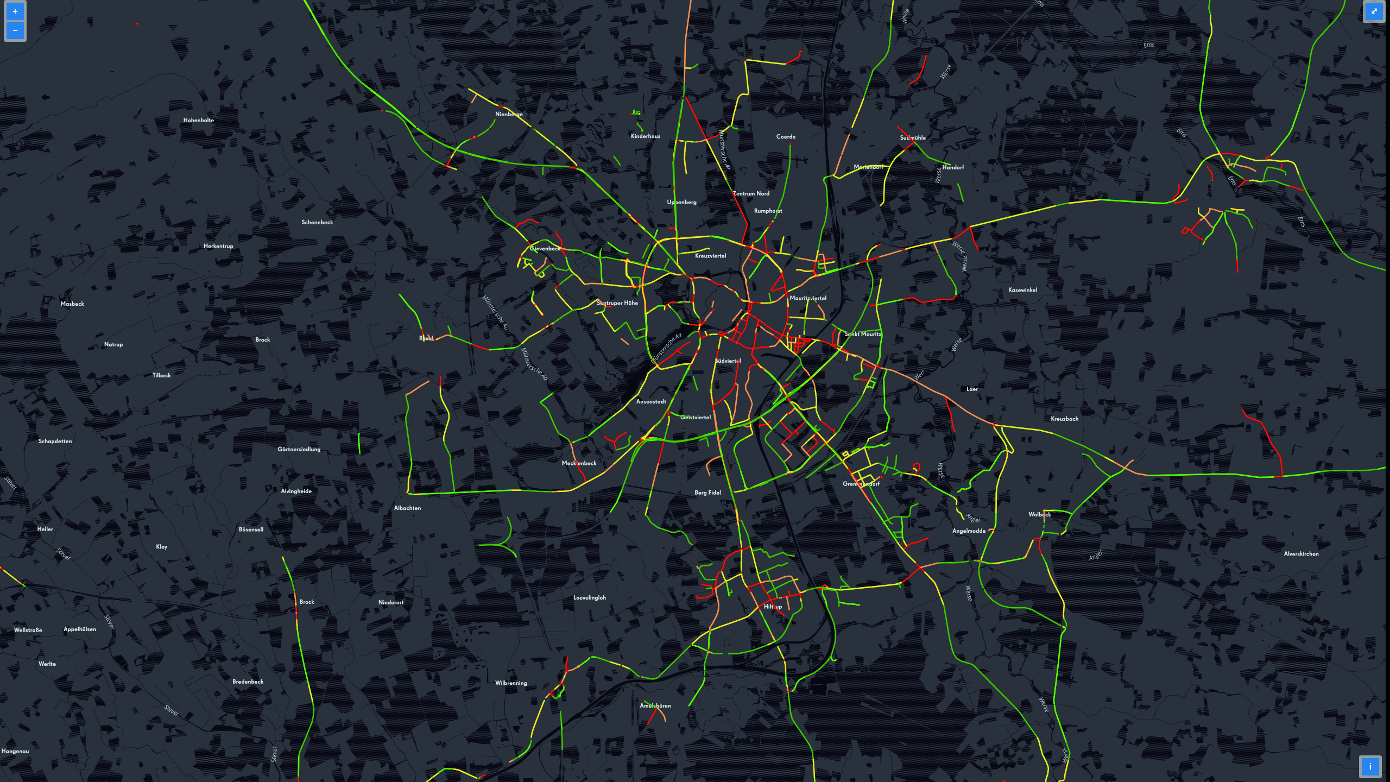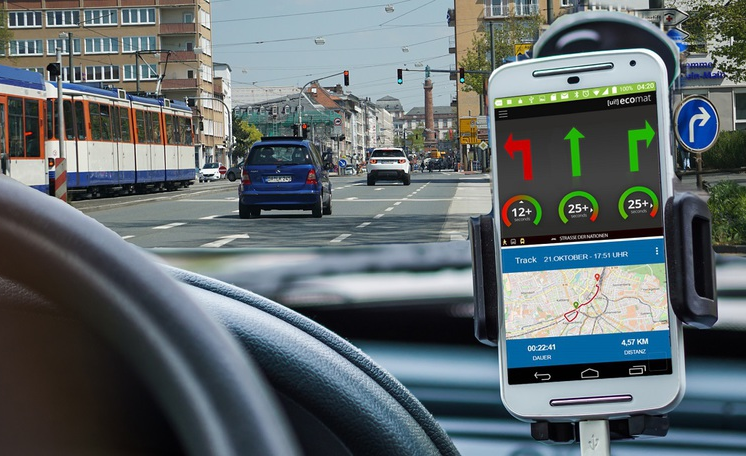Citizen Science for Traffic Management
Improving the provision of information for traffic management to further environmentally aware driving behavior
The CITRAM project aims to improve the quality of city traffic and make it more sustainable by streamlining the traffic flow. This improves traffic energy efficiency and lowers fuel consumption as well as the emission of air pollutants. Citizens are invited to contribute data collected while driving their car to gain information about the actual city traffic situation. For this purpose, 52°North enhanced the Citizen Science platform enviroCar to support automated near real-time services for analyzing traffic quality in the city.
The [ui!] – urban institute connected its IoT platform UrbanPulse to the municipal traffic information infrastructure. It also developed a traffic light phase assistant (ECOMAT) that takes into account the dynamic control of traffic light systems. Deggendorf University supported the data collection and the data analysis of electric vehicles. 52°North’s main task was to develop new and improved analysis methods for XFCD trajectories. New features include the estimation of the car’s energy demand from car movement data, the support of near real-time data stream processing, and the enhancement of MapMatching and Hot Spot analysis for network related road data based on an event-driven architecture. TSC Beratende Ingenieure für Verkehrswesen developed services for monitoring traffic quality and supported the cities of Krefeld, Hamm and Chemnitz in conducting data collection campaigns.
In 2020, CITRAM entered its final phase. We completed the implementation of changes to the enviroCar infrastructure and provided the software as a service for testing purposes. The three partnering cities supported field tests and evaluated the technologies and methods developed within the project. Due to the Corona pandemic, the cities had difficulty with the acquisition of participants for testing. This resulted in biased traffic characteristics – less traffic and fewer stop-and-go traffic situations. Nevertheless, the cities successfully completed the tests and these provided valuable insights into the project’s main ideas and research questions.

